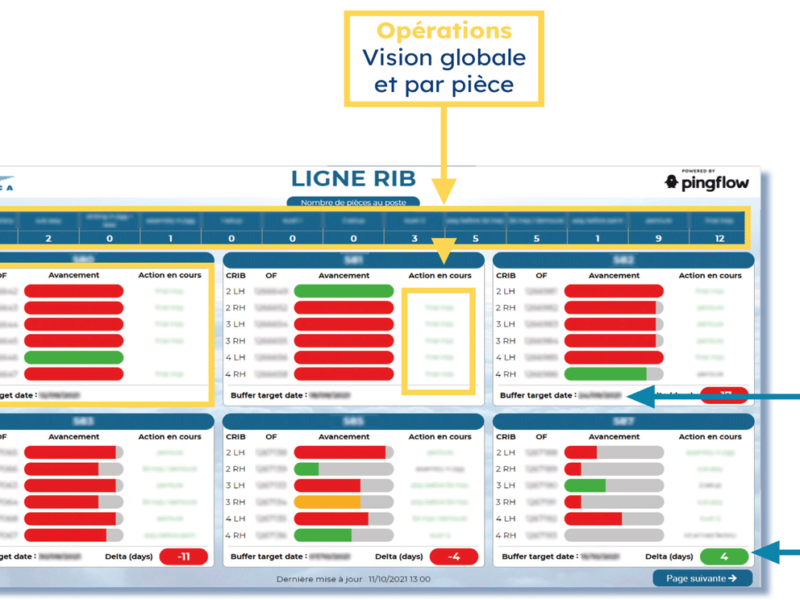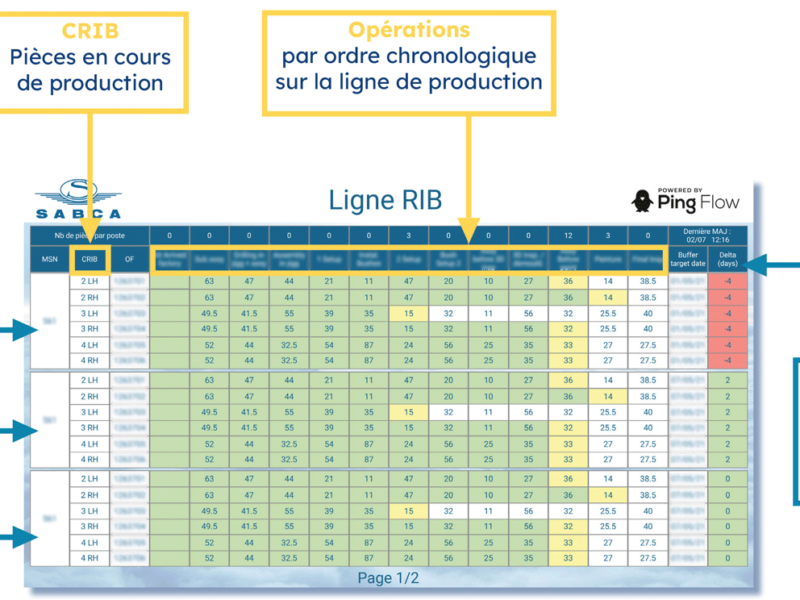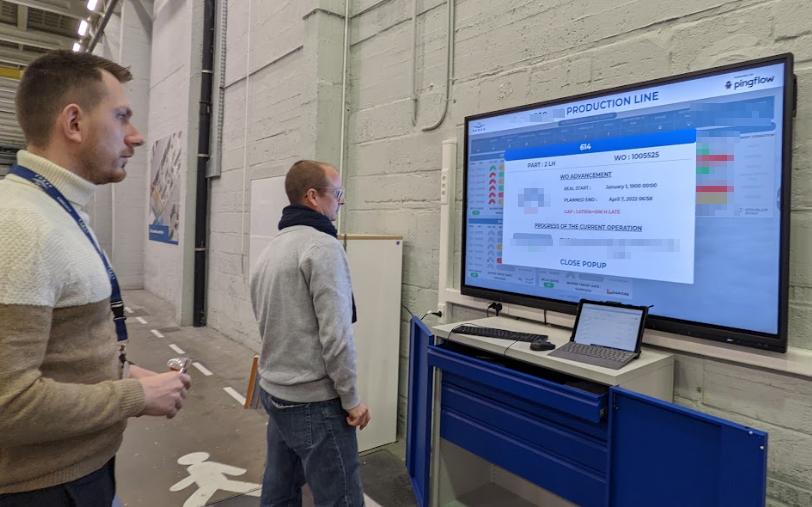Discover the feedback from David Vermoesen, Program Operations manager at SABCA, on his flowboard digitization project for production monitoring: here
A paper flowboard, a large synoptic spreadsheet schematizing the production lines, made it possible to follow the progress of each part during production, which each team leader would then “point” during the shift. Simple ? But not very effective! “Do the math: import the ERP data into Excel, print the tables, have them filled out by the team leaders for each of the 80 parts in production (and this over 2 shifts) and then manually enter the information into the spreadsheet.
The Pingflow teams were ultra-responsive. Pingflow has really succeeded in making this flowboard much simpler and more efficient in transmitting information. This is where you realize the contribution of design and UX to an interface like this.
David Vermoesen, Program Operations Manager
Goals
Quickly, SABCA set out to find a solution to automate the collection of field information.
- Monitoring of production progress in real time (instead of having a “photograph” per shift);
- The ability to better manage, even anticipate bottlenecks (bottlenecks);
- Automate tracking to save time and minimize errors
- And a net saving of time (for him, as for the team leaders).
Challenges
At a given moment, the production in progress on the 2 lines of the Sabca-Brussels plant is around 80 parts, i.e. the equipment of five A350s.
The plant operates in 2 “shifts” that must also be coordinated for the smooth running of operations.
In short: precise monitoring of production is mandatory.
Solutions
A digital flowboard allowing:
- immediate identification of “MSNs” (batches of parts in production corresponding to an aircraft)
- a clearer view of the progress of each batch according to the provisional schedule
- a visualization of the advance or delay in the production of parts (thanks to color codes applied to the gauges)
Results
- Time saved
- More precise information
- Productivity gains



